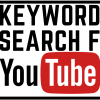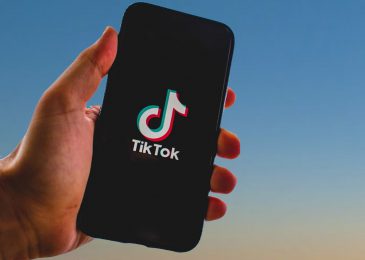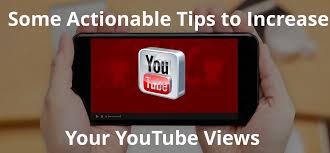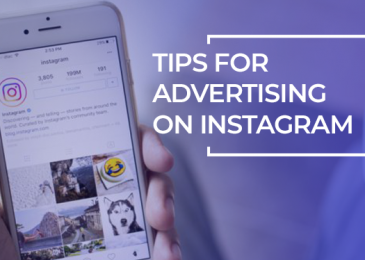Not all of Instagram’s user base is in the market for new products and services, let alone your particular product or service, there is still an abundance of opportunity to leverage the platform to sell your pretty things.
I’m here to tell you how to do it right! Follow these five steps to make money and move units on Instagram, and you’ll soon be selling on Instagram like a wily veteran.
Step 1: Convert to a business profile
Nothing novel here, but a shocking number of small business owners I talk to want to start selling on Instagram without first completing this simple step. Converting your standard Instagram profile to a business profile gives you access to a number of indispensable selling and reporting options. Before we get into those, here’s how to make the switch.
- Log into your account and tap the cheesburger-looking button at the top right of your dashboard.
- Tap Settings at the bottom right.
- Scroll down to “Switch to Business Profile.”
Boom! You’re done. If you ever want to switch back (you won’t), just head back to the same spot and tap “Switch Back to Personal Account.”
Now! Some highlights of the features available after you’ve made the switch:
- Instagram Insights. It’s not as easy on Instagram as it is, say, on Facebook, to look up a follower’s personal and demographic information. It’s even more difficult to compile that data in aggregate. Instagram Insights does the hard work for you.

There’s no shortage of useful data here, and when you switch to a business profile, it’s all conveniently accessible through the app on your smartphone. Under the Activity tab, you’ll find metrics like profile visits, website clicks, reach, and impressions. In the Content tab, you can take a more granular look at the performance of each post or story, including the profile visits and engagements of each. In the Audience tab, you can track the locations, ages, and genders of your followers, as well as the days and times of days they’re most active—all super useful information when we get to Step 3 on this list.
- CTA button. This appears at the top of your profile under your bio, and it gives people the option to call, email, or get directions to your business.
- Story links. As you may know, Instagram doesn’t allow users to link within posts. It also only allows one website link within a given bio. Being able to add links in your Instagram stories gives you the opportunity to direct your audience to various products and landing pages on your website. Stories are highly visible and steadily becoming a force, so this is a huge plus.
- Facebook alignment. You can now connect to your Facebook business page and start running ads through Business Manager/Ads Manager! This is Step 3. Don’t worry, we’ll get there.
Step 2: Buoy your organic campaigns with hashtag research
Another thing that happens whenever I take over a business’s Instagram account: business owners are desperate to reach more people, and they have no idea how. If you’re a serious business owner you might look at a hashtag and think, That’s a frivolous thing I want nothing to do with. But the fact is, hashtags are the biggest way to make an impact with your organic Instagram campaigns. Switching to a business profile gives you the ability to see, on a post-by-post basis, how many impressions come via hashtags, and how many of the accounts that you reached weren’t following you when they saw your post. When you get smart with hashtags, both of those numbers will skyrocket.
“Hashtag research” is a bit of an ostentatious thing to say, but it sure does sound good to a client, and it sure is effective in practice. The actual process is quite simple. Head to Discover > Search >Tags and search for terms related to your niche. You’ll then see how many posts have used that hashtag. When you use that hashtag in your post, you add your post to the Discover queue.

You want to use a combination of hashtags that have both high posting volume and comparatively lower posting volume. The reason is that the “comparatively less” variety can often be just as, if not more, relevant and using them gives your post a good chance to be seen and engaged with by a high-intent crowd.
Settle on a unique messaging flavor (one that is distinct from your other platforms) and use a tool like Hootsuite or Sprout Social to set your organic social schedule weeks in advance, leveraging Instagram Insights to schedule posts at peak hours. Instagram is a great place to be playful and highlight the personality behind your brand while showcasing thumb-stopping product creative. Include “link in bio” CTAs in your copy and make sure to change that link frequently to match specific promotions and areas of focus.
Step 3: Start running ads
Another thing I hear a lot of: I have a very slim budget and want to make the most of it. A lot of business owners think having a small budget takes them out of the running for Instagram ads, and that couldn’t be further from the truth. If you execute effectively, you will get more for your money running low-budget paid Instagram campaigns than you will creating and running organic campaigns. And I know what you’re thinking—Unless I’m paying someone to do it for me, aren’t organic campaigns free? Yes. But Instagram ads represent the potential for insane ROI, so if you do it right, you’re going to get your money back with plenty of interest.
To really get the most bang for your buck, you’re going to want to resist the urge to just tap “Promote” within the Instagram app. Your interest and demographic targeting is going to be super limited, and you won’t have access to Custom Audiences, with which you can remarket to Instagram users who have taken specific actions on your website and get them to buy that widget they never bought.

Run your ads in concert with Facebook ads, or edit your placements to only run them on Instagram. But take the time to set up your campaigns in Ads Manager.
Doing so means you’ll have access to Facebook’s sophisticated suite of targeting options, as well as the Reach and Brand Awareness campaign types, both of which allow you to get your ads in front of a monster number of users on the cheap. You can use the traffic and engagement you accrue from these campaigns in concert with RLSAs to convert prospects in Search later on; or, as I mentioned, you can use them to create remarketing lists within Ads Manager and run conversion campaigns on Facebook and Instagram.
Step 4: Use Instagram shopping if you’re moving physical products
Instagram shopping is dope. The only caveat is you can’t use it if you’re selling services. If you are, feel free to skip to the next step. But if you’re an e-comm vendor, Instagram shopping is your best friend.
A brief explanation of how it works, and how to get set up. Shopping posts look like organic posts, with the exception that when users “tap to view products,” product names and prices are revealed.

And when they click on the tags that pop up, they’re taken to a product details page containing a description of the product and a CTA. From there, they click through to a landing page.
Set up is a matter of making sure you have a product catalogue ready to go in Facebook and enabling product tagging. For an in-depth rundown on that process, check out our post on using shopping in Instagram stories.
When you run Instagram shopping posts as ads, you’re equipping yourself with both the intent-wrangling capacity of Google Shopping and the sophisticated audience targeting of Facebook. Manual targeting (Demographic, Behavior, Interest) lets you reach a very broad base of net new prospects; and the ability, through product tagging in Instagram shopping, to show those prospects all the relevant details of your product—mainly, what it looks like and how much it costs—ensures that anyone who engages with your ad is highly qualified once they land on your website.
As an added bonus, your Instagram shopping posts reach even more users on the newly-created Shopping channel in Instagram Explore.
Step 5: Partner with influencers

Influencer marketing has been on the rise for a while now, but it’s especially prominent on Instagram, and it’s especially prominent as a means of promoting physical goods. Why? Because putting your product in the hands, or draped on the shoulder, or in the stomach (if, say, you’re selling a juice) of an influencer lends it credibility with an expansive and wholly new audience.
There is a glut of millennial Instagram influencers right now who grew up using the app and have an inherent understanding of how to leverage it to accrue and maintain a loyal following. There are thousands of these tiny pockets of stardom on the app, and for a very reasonable price—most influencers charge by the follower, at $5-$10 per 1,000 followers—you can leverage them to put your product in the limelight.
That means that, say, if you only wanted to spend $100 on an influencer campaign, you could afford an influencer with about 10,000 followers. That’s 10,000 people that didn’t know about your product before. And again, because your paying for credibility as well as reach, this can be a more effective strategy than, say, spending $100 on an Instagram ad campaign that reaches 10,000 people.
Read more How to Advertise on Instagram effectively
_______________________________________________________________________________
For more details about our seo service packages, pls contact us
BIGBIGSEO Team
Email: bigbigseo@gmail.com
Skype: bigbigseo
https://www.facebook.com/bigbigseo
Thank you!




